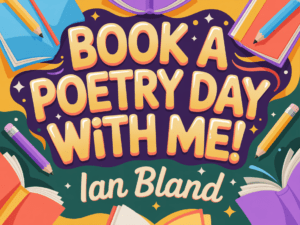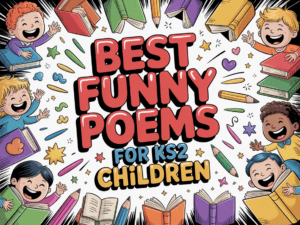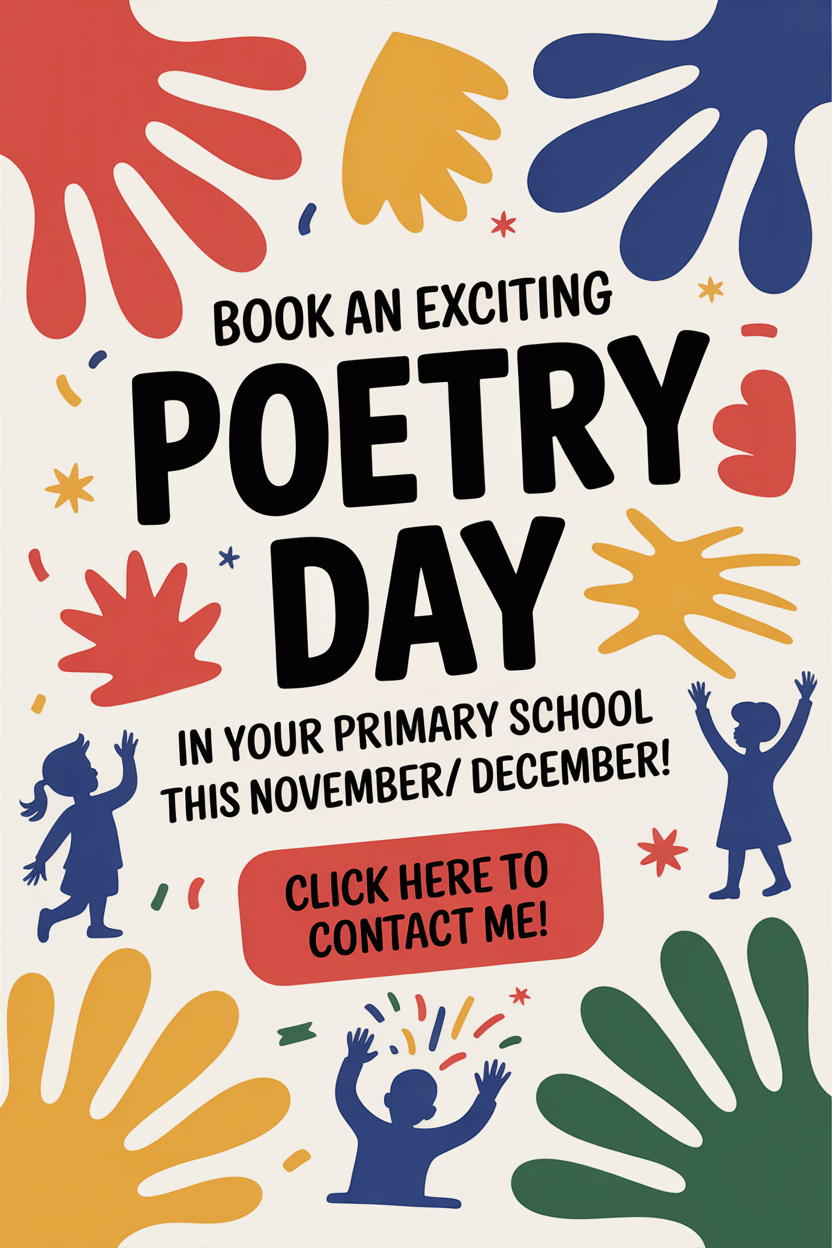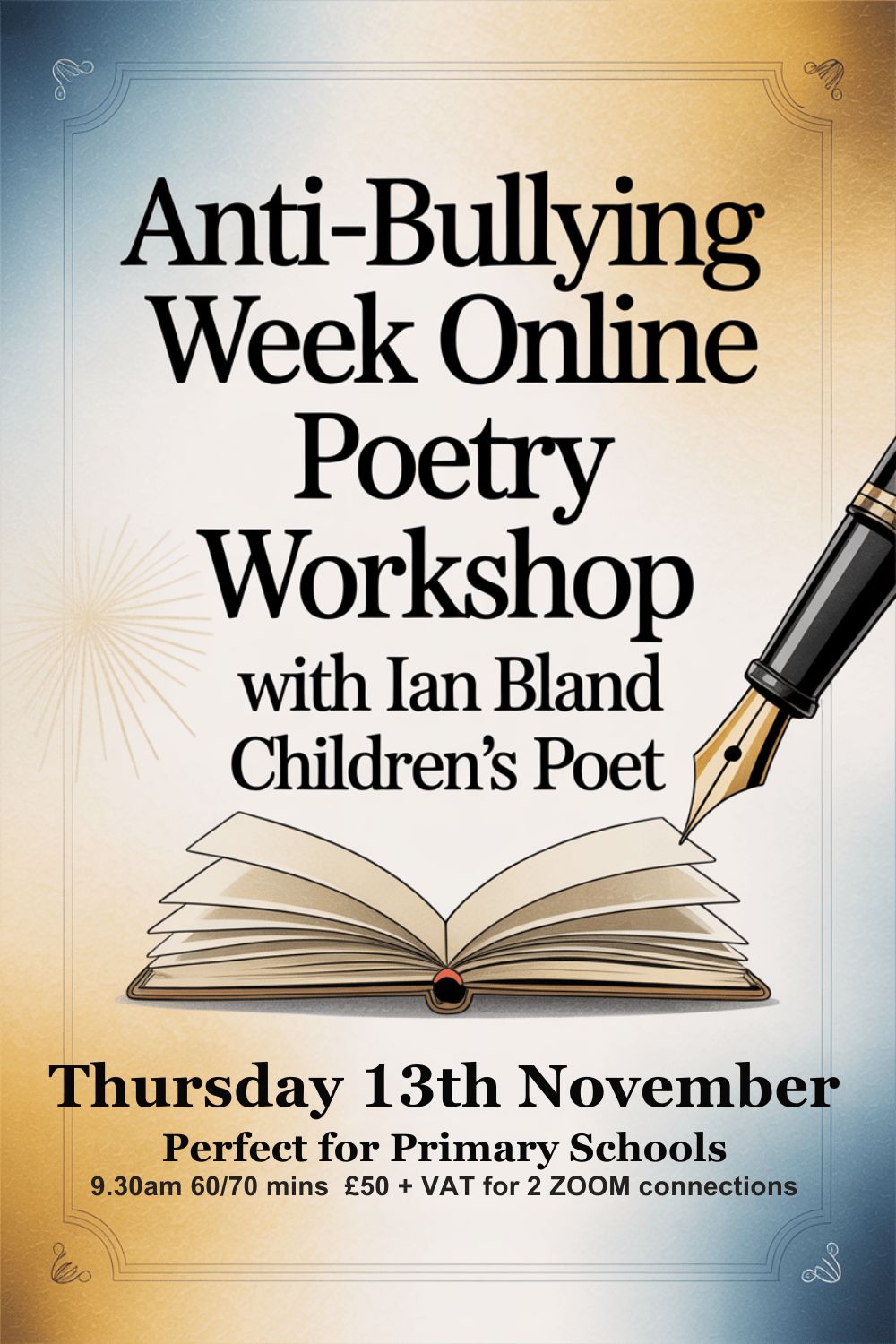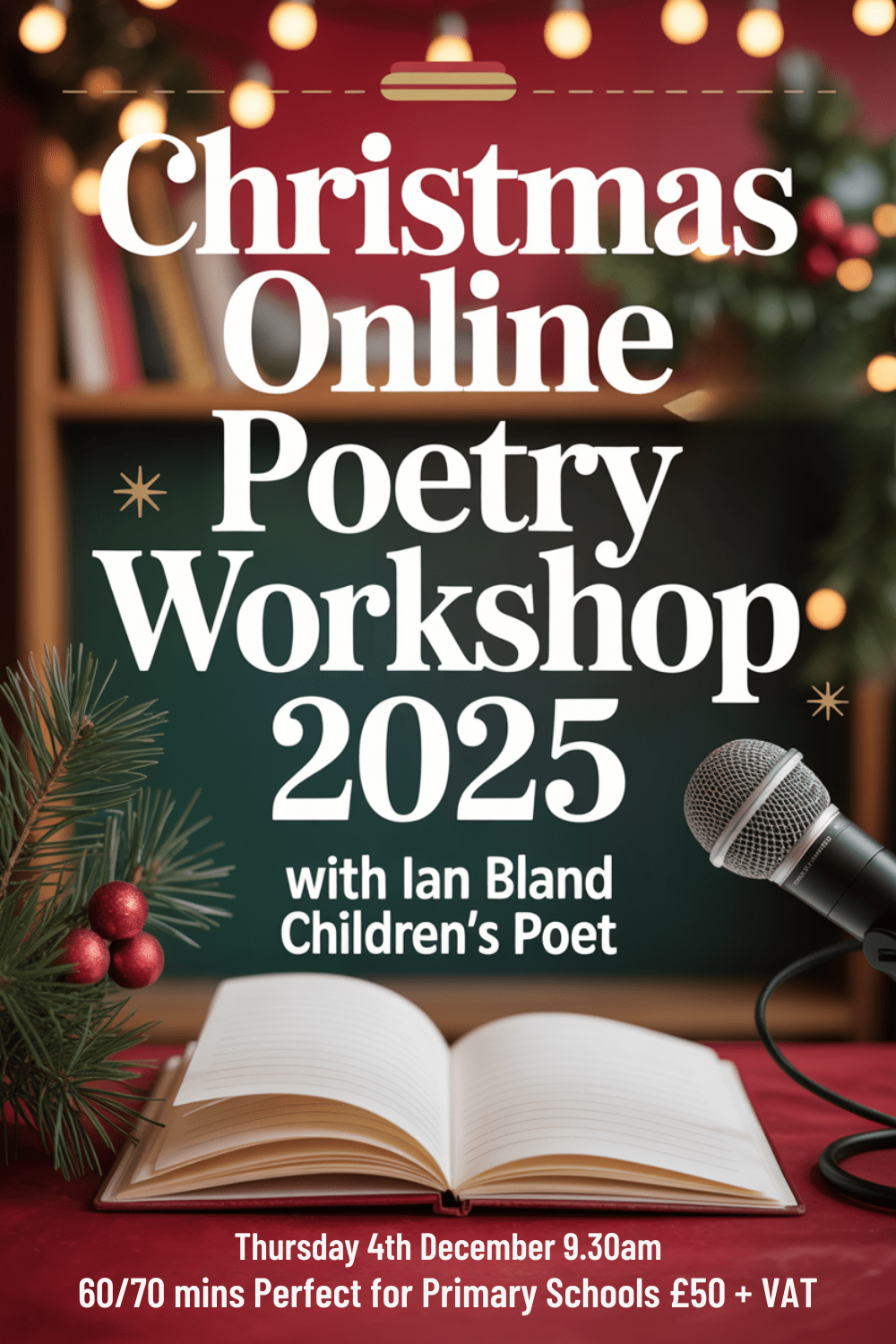Teaching Figurative Language through Poetry KS2 ✏️ | Similes, Metaphors & Personification Made Fun
Figurative language helps children see the world in new and imaginative ways.
Whether it’s a simile that makes you laugh, a metaphor that paints a picture, or a piece of personification that brings the playground to life — poetry is the perfect place to explore it.
Teaching figurative language through poetry KS2 encourages pupils to write creatively, express emotion and experiment with rhythm, rhyme and imagery — all key elements of the English National Curriculum for primary schools.
Through figurative language poems, pupils can:
🌟 Understand and use similes, metaphors and personification
🎨 Create vivid imagery that appeals to the senses
🗣️ Develop expressive reading and performance confidence
📝 Build vocabulary and awareness of poetic devices
👉 In my Poetry Days across the UK, I show children how to use figurative language to turn ordinary topics into extraordinary poems!
I visit over 100 schools every year — performing my poems, inspiring pupils and helping teachers link poetry to curriculum objectives.
📅 You can book me for:
In-person Poetry Days across the UK
Online Poetry Workshops – affordable, interactive and fun
➡ Secure your date here: Poets in Schools – Ian Bland
💡 Why Teach Figurative Language through Poetry?
When children learn to use similes, metaphors and personification, their writing becomes richer and more expressive.
Poetry offers a safe, playful way to practise these skills. It encourages imagination, emotional literacy and performance confidence.
By exploring figurative language, pupils also cover key areas of the KS2 English curriculum, including:
Using figurative language for effect and impact
Choosing precise vocabulary to convey meaning
Reading aloud with tone and expression
Listening and responding to performance poetry
🔗 Related: Performance Poetry KS2 | Poetry Teaching Ideas |
🍽️ Poem 1: Dinner Lady Ballerina
by Ian Bland
She moves like a whirlwind in sensible shoes,
Dodging the puddles and lunchbox queues.
With spoons and trays she twirls around,
Her laughter’s the happiest playground sound.
She’s quick as a flash when she’s clearing a plate,
She’ll juggle the jelly before it’s too late!
With an apron that flaps like a circus tent,
She’s part ballerina, part accident.
She twirls through custard, skips past stew,
A spin, a slide, then “Mind that glue!”
Her dance never ends till the bell goes ding,
Then she bows to applause — the dinner-time king!
💡 Classroom Activity Ideas: Similes & Exaggeration
Spot the Similes
Ask pupils to find the similes in the poem (“moves like a whirlwind,” “quick as a flash”). Discuss how they create energy and humour.Create a Character Poem
Children choose another school role — caretaker, teacher, headteacher, cleaner — and describe them using similes and action verbs.Rhyme & Movement
Act out the “Dinner Lady Dance” as a group performance. Add simple actions for each simile or verb.Cross-Curricular Link: PSHE
Talk about how poetry can celebrate everyday people in school. What makes a good team member?
🔗 Related: Funny School Poems KS2 | Performance Poetry Activities KS2
 🛝 Poem 2: The Playground
🛝 Poem 2: The Playground
by Ian Bland
The playground yawns awake each day,
A giant stretching in the grey.
Its chalk-lined smile, its skipping beat,
Its heartbeat echoes under feet.
At breaktime, laughter shakes the ground,
The slide squeals out a joyful sound.
The climbing frame begins to sing,
The roundabout spins like a carnival ring.
When the bell cries out, the giant sleeps,
Dreams of games the playground keeps.
Till morning comes with shouts anew —
The playground wakes… and so do you.
💡 Classroom Activity Ideas: Personification & Imagery
Object Comes Alive!
Ask pupils to describe part of the school (the hall, library, or classroom) as if it were alive. What does it see, hear, or feel?Spot the Personification
Identify examples like “The playground yawns,” “The bell cries out.” Discuss how giving human traits to objects builds atmosphere.Soundscape Performance
Recreate the playground through sound — laughter, whistles, balls bouncing — while one group performs the poem aloud.Art Link: Illustrate the Poem
Draw the “sleeping playground” or create a collage showing it waking up in the morning.
🔗 Related: Descriptive Poems KS2 | Poetry for Assemblies KS2
🧠 Poem 3: The Brain
by Ian Bland
My brain’s a busy building site,
With cranes that clank from day to night.
Ideas arrive in trucks and vans,
And workers build them into plans.
Sometimes they hammer, sometimes they pause,
Sometimes they’re fixing mental doors.
Sometimes it’s noisy, sometimes still,
Sometimes thoughts slide down the hill!
But when the workday’s finally through,
A shiny poem stands brand new —
My brain’s a builder, proud and bright,
It works all day and dreams all night.
💡 Classroom Activity Ideas: Metaphor & Creativity
Explore the Metaphor
Discuss how the poet compares his brain to a “building site.” What other metaphors could describe thinking — a computer, a forest, a machine?Write Your Own Extended Metaphor Poem
Begin with “My brain is…” or “My imagination is…” and let pupils create their own extended metaphors.STEM Link
Link to DT or Science by exploring how machines, engines or systems work — and how we can describe them poetically.Performance Tip
Perform it using building sounds: hammering, drilling, clanking — to help children feel the rhythm and flow of metaphor.
🔗 Related: Creative Writing KS2 | Growth Mindset Poems KS2
🧑🏫 Teacher Pedagogy Notes
Curriculum Links:
English: use of figurative language, descriptive vocabulary, rhythm and rhyme.
Spoken Language: performance, tone, and intonation.
PSHE: empathy, teamwork, valuing everyday roles.
Art/DT: illustration and visual literacy.
Differentiation:
Support: highlight and match similes or metaphors from the poems.
Challenge: write a full extended metaphor poem or compare two forms of figurative language in one piece.
Extension: publish an illustrated class anthology of “Figurative Poems KS2.”
Engagement Tip:
Use figurative language poems for display work and assemblies — pupils love seeing their writing celebrated on the wall or performed to others.
🌟 Final Thoughts
Teaching figurative language through poetry KS2 transforms how children write and think.
They learn to spot the magic in words, to connect ideas with emotion, and to use rhythm and imagery to bring their writing to life.
📚 Every simile, metaphor or piece of personification helps pupils find their creative voice — and poetry is the perfect place to start.
📣 Bring Poetry to Life in Your School!
Book a Poetry Day or Online Poetry Workshop and let me help your pupils master figurative language through rhythm, rhyme and imagination.
👉 Find out more about my Poetry Days »
👉 Book an Online Workshop »


